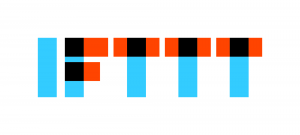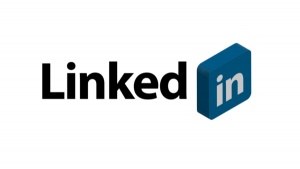Hiring the wrong candidate can set an organization back significantly in terms of time and money. Given the high stakes of the selection process, many companies have taken to using pre-employment assessments to provide more data on candidates in the hope that this information will allow them to make better decisions. While simply having more data doesn’t guarantee better results, a properly designed and administered pre-employment assessment can be a valuable tool when incorporated into a comprehensive selection process.
A Word of Caution About Selection Assessments
Any discussion of using leadership assessments in the selection process needs to be very conscious of the fact that not all assessments are designed to the same scientific standards. Organizations often fall into the trap of thinking that a test will take the human element out of the hiring process and shield them from bias or discriminatory practices. Unfortunately, many tests are simply not well-designed, yielding results that have little to do with a candidate’s ability to do a job. Take, for example, the famous Meyers-Briggs Type Indicator Test, which is administered by many organizations as a personality test. This test was never intended to be used for selection purposes, so using its results to evaluate candidates could actually distort the hiring process. Even worse, since it was not designed for selection, the test is not legally defensible and could expose a company to substantial liability.
When implementing any assessment, HR professionals need to be highly aware of what the assessment is intended to measure and how the results should be evaluated. After all, even the best assessments can be misused if the results are not interpreted or applied properly.
Types of Selection Tests
By their very nature, selection tests are standardized and administered in the same way to all candidates. Assuming that the assessment is well-designed, the purpose of the tool is to provide unbiased information about a person’s personality, cognitive ability, or aptitude for job-related criteria. Unlike interviews, which are often unstructured and don’t ask every candidate the same questions in the same context, tests are administered consistently. They provide a standardized set of data that allows an organization to compare candidates against one another. And since the data can be viewed separate from other identifiable candidate information, pre-employment assessments can reduce the risk of unconscious bias.
In most instances, organizations use one (or more) of three types of assessment tests.
- Aptitude Tests: Sometimes referred to as cognitive tests, these tests are intended to measure critical thinking, problem-solving, and the ability to learn and apply new information. They are distinct from skills-based tests in that they focus on generalized reasoning and analysis capabilities.
- Personality Tests: Although they come in many forms, personality tests seek to measure core personality traits to predict a candidate’s behavioral tendencies and cultural fit. Factors like self-awareness, openness to experience, honesty, and stress tolerance are typically the main focus of these tests. They may also provide some insight into what leadership style a candidate will respond to or use and how they learn most effectively.
- Skills Tests: More common for positions that require extensive technical knowledge, skills tests measure specific job-related competencies. Ideally, pre-employment skills testing should be able to indicate whether or not a candidate possesses the necessary skills to meet the requirements of a position.
Top Benefits of Pre-Employment Assessments
Assess For Cultural or Organizational Fit
While skills and competencies are important when determining whether or not someone can do a job, assessing how well they will be able to thrive within an existing organization is almost as important. If a new hire isn’t comfortable in their environment, they will struggle to perform and remain engaged. When an employee feels like an organization’s culture matches their values, they tend to be happier and more productive. It also makes them less likely to leave and force a company to start the selection process all over again.
Personality assessments can help to identify dominant characteristics and behavioral tendencies that influence how well a candidate will fit in from a cultural standpoint. Someone who is very structured in the way they approach their work and tends toward introversion, for example, may have a hard time feeling comfortable in a freewheeling start-up that prides itself on being informal and collaborative. Learning these details about a candidate during the selection process can help organizations to make better decisions and avoid costly hiring mistakes.
Streamlined Hiring Process
When many organizations advertise a position, they wind up having to sort through a huge number of resumes. Sorting through those applicants can be a time-consuming process, and one that’s complicated by the recent revelation that as many as 85 percent of resumes contain dishonest statements. By requiring candidates to complete a pre-employment assessment, organizations can effectively weed out candidates who lack qualifications or “resume spammers” who don’t put much thought or effort into their application. Narrowing the candidate pool with automated tools allows HR managers and recruiters to dedicate more attention to evaluating and potentially setting up interviews with applicants who are both qualified and serious about the position.
Better Onboarding and Development Insights
Successful organizations are able to identify and cultivate high-potential employees for leadership positions. Rather than constantly seeking out new external talent, effective companies boost retention by creating a strong succession pipeline of talented internal candidates. Knowing how to find these high-potential employees and understanding what development resources they need to maximize that potential is an essential part of this process. Pre-employment assessments can be designed to give organizations not only an idea of what that candidate is capable of today, but also a sense of what they might be able to accomplish in the future with the right guidance.
Armed with this data, companies can take a longer-term view of how a candidate fits their needs and design a development program that is well-suited to them. They can also use it to customize the onboarding process so that it caters to the new hire’s learning style and fills any skill gaps. Improving the onboarding process is critical to increasing employee retention, especially since the average company loses about 1 in 6 of their new hires within three months.
When properly designed, administered, and interpreted, pre-employment assessment tools can be a valuable resource for organizations looking to create a more robust hiring process. Having more data doesn’t automatically guarantee better results, but it does provide experienced HR professionals with additional insights that can help them streamline the selection process and make more informed decisions. Combined with traditional approaches like structured interviews, assessments can make it easier to hire the right candidate the first time and keep retention rates high.
Business & Finance Articles on Business 2 Community
(60)






